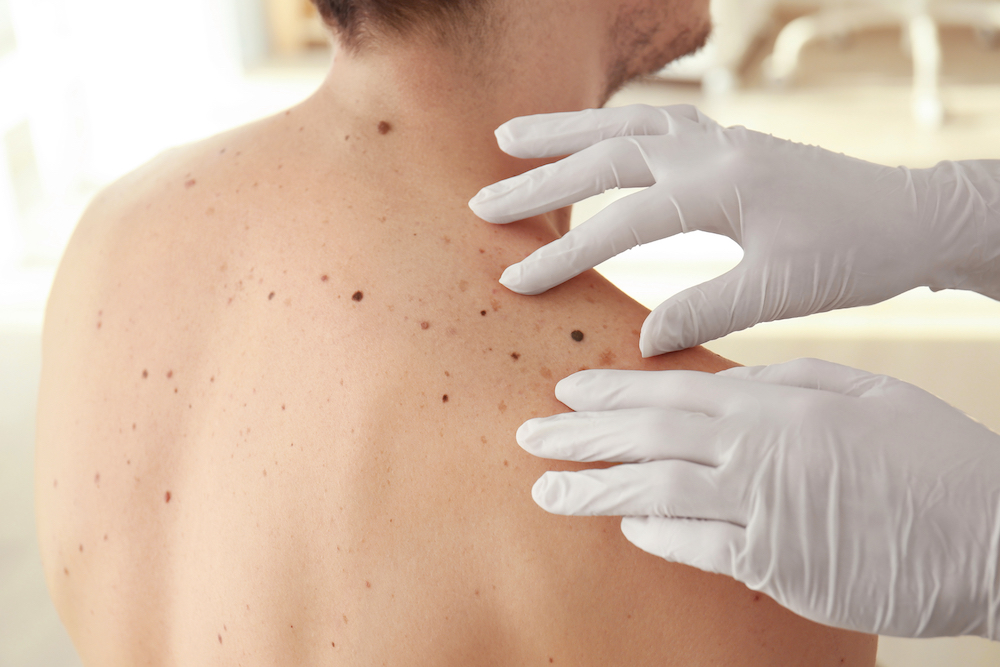Is Melanoma Lethal?

As a dermatologist, skin cancer is one of the greatest health concerns that we see in the office. It is a serious health condition that is extremely prevalent in the United states. In fact, the American Academy of Dermatology Association states that 1 in 5 Americans will develop some type of skin cancer during their lifetime. Perhaps the most serious type of skin cancer, melanoma, affects more than 1 million Americans today.
Melanoma can have the most serious impact on someone’s health. If ignored and not treated, it has the potential to be lethal. The good news is that with early detection, most skin cancers can be treated successfully.
In our Atlanta dermatology office, we get a lot of questions about skin cancer, specifically concerns about melanoma. In this article, Dr. Straughn will address some of the most common questions, so you know what to look out for when it comes to melanoma.
What is Melanoma?
Melanoma gets its name from where it begins. It originates in the melanocytes, which are the pigment producing cells of the skin. When melanocytes are exposed to the sun, it triggers the production of melanin. Melanin is the substance that gives our skin its pigment. A person develops melanoma when intense sun exposure damages the melanocytes and results in the growth of irregular cancer cells.
Melanoma develops quickly and can spread to other organs of the body. While it is not the most common type of cancer, it can be very dangerous if left untreated.
There are different types of melanoma including:
Acral lentiginous melanoma: This type of melanoma may develop in the nail beds, palms of the hands or soles of the feet. While it is relatively rare, it is most commonly found in people with skin of color. Because of where it develops, it often goes unrecognized.
Superficial spreading melanoma: This type of melanoma can happen in an existing mole, but can also be found in a new mole. It can develop anywhere on the body and is characterized as a slightly raised bump that can be brown, red, blue, black, grey or white.
Lentigo maligna melanoma: This kind of melanoma is typically found in older people who have had years of intense sun exposure and damage. Oftentimes, this kind of melanoma will develop on the upper body, including the face, arms and chest. This kind of growth will typically be tan or brown in color, and grow in size over time.
Nodular melanoma: Considered the most aggressive kind of melanoma, the cancer cells develop deep in the skin and can develop really quickly. This kind of melanoma is the most dangerous because it has the propensity to affect other body systems.
How do you know if you have melanoma?
It can be difficult for most people to determine if they have an abnormal mole on their body. In order to ensure early detection, it is critical that people see their dermatologist for an annual skin check. This is the only surefire way to monitor any changes in moles or the development of new moles.
A helpful tool that you can use to help you assess whether a mole is something to be concerned about is called the ABCDE’s of skin cancer. If you notice any of these warning signs, it is important that you make an appointment with your dermatologist.
Asymmetry: The mole is not the same in all parts in its texture and appearance.
Border: The mole has uneven edges.
Color: The mole darkens in color or includes more than one color.
Diameter: The mole is larger in diameter than that of a pencil eraser.
Evolution: The mole developed very quickly or changed very rapidly.
Is melanoma lethal?
This is often a difficult question to answer. The first thing to understand is that with early detection and treatment, melanoma is curable. The longer you wait to address a potentially dangerous mole, the lower your chances of being able to effectively treat it. Schedule an appointment with your dermatologist for an annual skin check to avoid developing a melanoma that may not respond well to treatment or aggressively spreads to other body systems.
Skin Cancer Dermatologist Atlanta
There are things you can do to decrease your chances of developing skin cancer, including melanoma. Be conscious about your sun exposure. Limit your sun exposure as much as possible. If you must be outdoors, be sure to wear a sunscreen as well as a wide-brimmed hat and other sun-protective clothing. Finally, schedule annual skin checks with your dermatologist.
If you live in Atlanta or College Park and have concerns about an abnormal mole or changes in a mole, contact Buckhead Dermatology today. Dr. Straughn can help you assess your mole and determine if it requires treatment.
